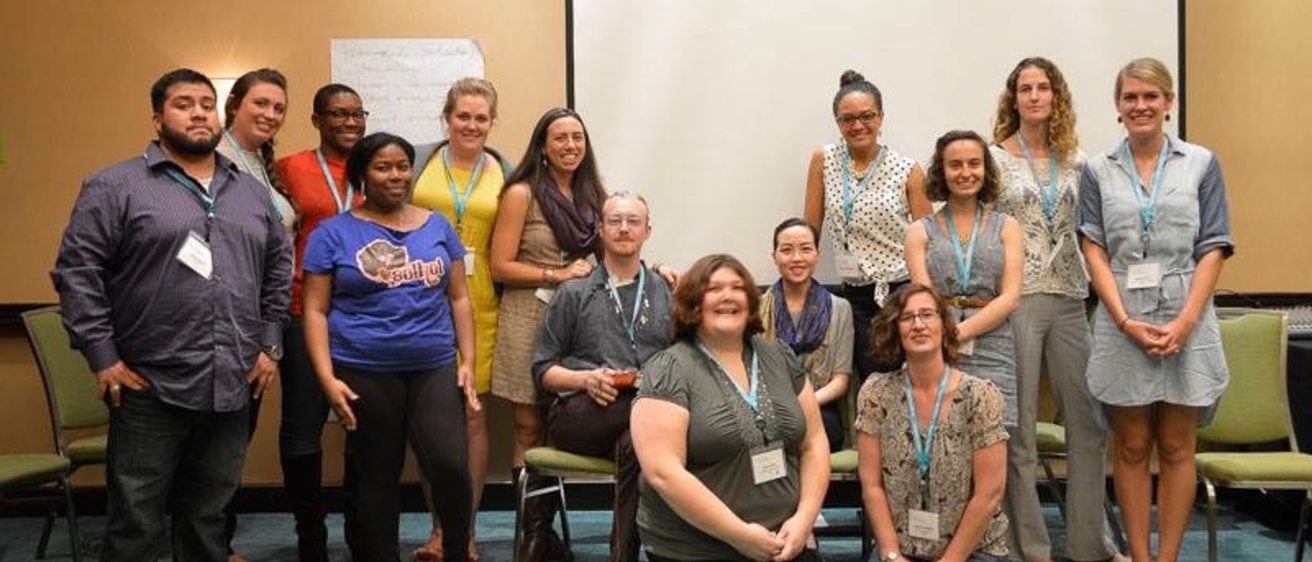Moving the Middle — Reflections on Imagining America’s national conference by Heather Draxl
The theme of this year’s Imagining America conference, held in Atlanta, Georgia, was “Organizing. Culture. Change.” Those three words were intended to “represent concentrations of energy and activity across higher education and within the IA consortium” and played a role in one of the conference’s primary goals: “to illuminate how organizing culture change can transform higher education’s role in the work of democracy” (IA, 2014).
At an Imagining America conference, it’s a pretty safe assumption that participants are invested in civic engagement. We may debate best practices or support different approaches, but we generally agree that it is important and worthwhile, and that we want to increase quality civic engagement programs on our campuses and in our communities. While it was refreshing to be surrounded by practitioners and educators who are passionate about civic engagement, the conference brought attention to the fact that for many of us, Imagining America is a bit of an oasis. In our day-to-day lives, civic engagement is not always supported or valued, and, if resources are scarce, may not always be possible. Throughout the conference, I wondered how we could change some of the negative attitudes towards civic engagement, especially in the culture of higher education.
Because the conference was located in Atlanta, a mecca for activism during the Civil Rights Movement, the conversations about organizing cultural change often referred to the movement’s history. Our keynote speaker, the brilliant Doug Shipman, who helped establish the Center for Civil and Human Rights in Atlanta, convinced me that the movement could teach us a great deal about using stories to change perceptions and bring about action. [Hear Shipman's talk here: https://www.youtube.com/watch?v=qvUvQw6p8TQ].
Shipman noted that the Civil Rights Movement was successful because the struggle for equal rights was humanized through narrative. Half a century later, we still know some of these stories, like the story of Rosa Parks, because they are powerful illustrations of how segregation affected average people on a daily basis. During the movement, these narratives were pivotal in raising support for civil rights, but Shipman argues that these stories wouldn’t have been as effective had they not been framed by the insistence that things could be better. They created a space for people to describe a different reality. Dr. King’s infamous “I Have a Dream” speech is a perfect example of this, as were many of the slogans and freedom songs that, in Shipman’s words, “empowered people to speak into existence an ideal future.”
This vision for a better future was hugely influential once it gained traction. In the beginning of the movement, civil rights supporters did not have enough power to change policy or law. It was only after civil rights activists were able to “move the middle” by connecting with those who were neither strongly for nor against civil rights that the movement became strong enough to cause change. By describing civil rights in terms of the nation’s unfulfilled potential, activists moved the middle. Their stories convinced Americans that equal rights were part of a better future and that by voicing desire for that future, ordinary citizens could help it become a reality.
This, Shipman explains, is what we can learn from the Civil Rights Movement. If we want to bring about action, we need to focus on what is unsettled rather than on what is settled. When telling our stories, we need to show our audience how they have the power and agency to create change.
The way I interpret this in terms of my question, is that as educators, we can harness the power of narrative to tell stories about what the future of higher education can be, rather than simply describing what it is not. We might consider telling those stories to everyone, rather than just those who are already involved in higher education — because we will most certainly need to if we want to change the way people think about academia. We might consider how we can empower others through our stories. Perhaps, more importantly, we can recognize how the stories of others can empower us.
Reflections on Imagining America by Kat Litchfield
I had the privilege of attending the Imagining America conference in Atlanta, Georgia, this October. As a PAGE Fellow, I met with fourteen other graduate students from around the nation to discuss our passions and purposes for supporting public engagement projects, social justice, and higher education disruptions that forward greater collaborations across communities. We spent time with past PAGE Fellows who continue to develop their visions, and with members of the Imagining America board and faculty who support these projects on their own campuses.
A favorite moment for me was the dynamic keynote given by the CEO of the National Center for Civil and Human Rights, Doug Shipman, whose lecture can be found here. His storytelling style is representative of his proficiency in leading collaborative efforts across communities. He shared an engaging narrative about the power of a memorial that gives a cultural heritage back to the people who carry forward the message of social justice. Our visit to the center was a powerful reminder of the icons of our nation’s history, and the formidable work yet to be done to protect the civil and human rights of all across the globe. The conference kept us busy with plenty of seminars, workshops, and site visits to choose from, but perhaps my most valuable time was spent in earnest conversations with attendees who serendipitously crossed my path, the meetings in the margins of the official agenda. I’ve come home re-energized to pursue my academic and social work with a clearer idea of my own dedication and investment.
